So, you’ve added a sago palm or two (or five!) to your garden. And who can blame you?
In warm climates they’re hardy plants that can be grown outdoors, with impressively feathery, shiny dark green foliage that evokes a prehistoric feel straight out of Jurassic Park, the perfect backdrop to the backyard dinosaur display of your dreams.
In colder regions, they make an excellent addition container gardens, or they can be grown indoors year-round if you have the space.
But wait a minute. What’s this? Are those fronds drooping, and beginning to yellow? What are these tiny white flecks? Something’s not quite right here…
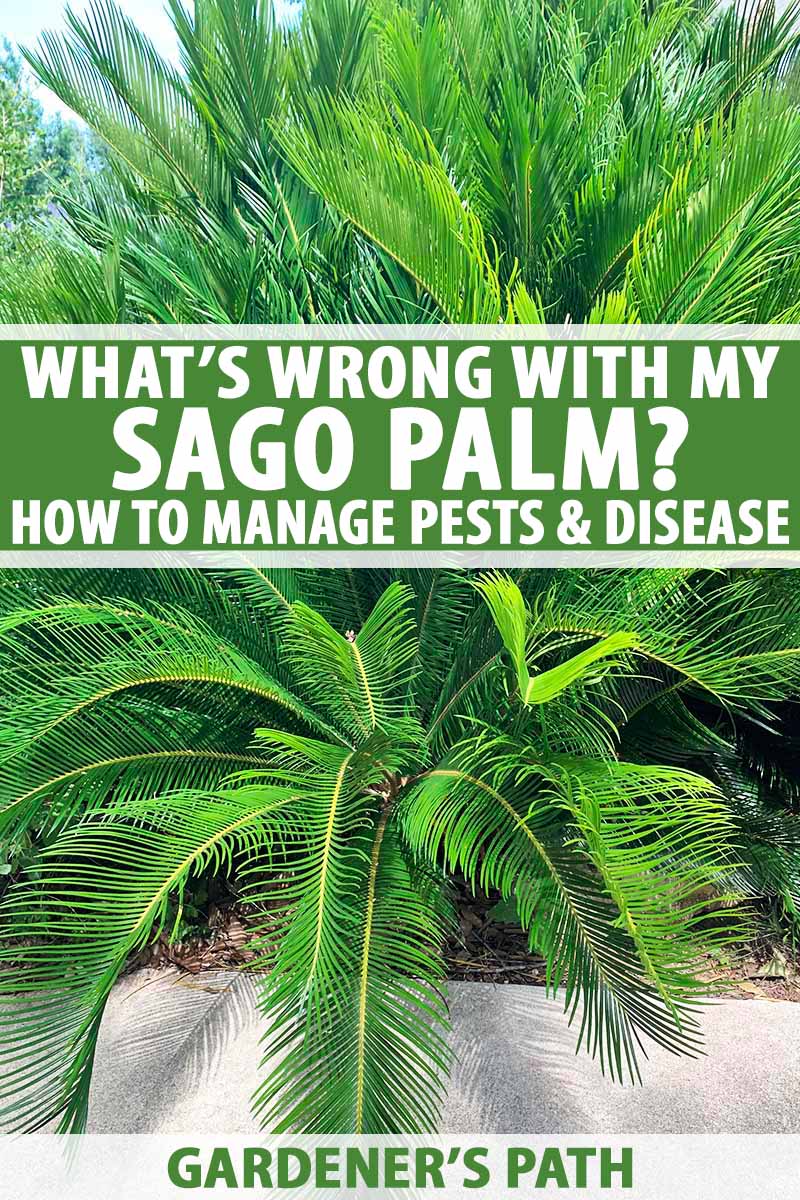
We link to vendors to help you find relevant products. If you buy from one of our links, we may earn a commission.
Cycas revoluta is not plagued by many types of insect pests or diseases, but there are a few items to keep in mind and look out for, preventive care options, and ways to troubleshoot common problems when they arise.
Whether you just received your delivery of these plants or you inherited a few mature specimens when you moved into your new apartment (like I did when I first moved to Los Angeles), sago palms are easy to care for.
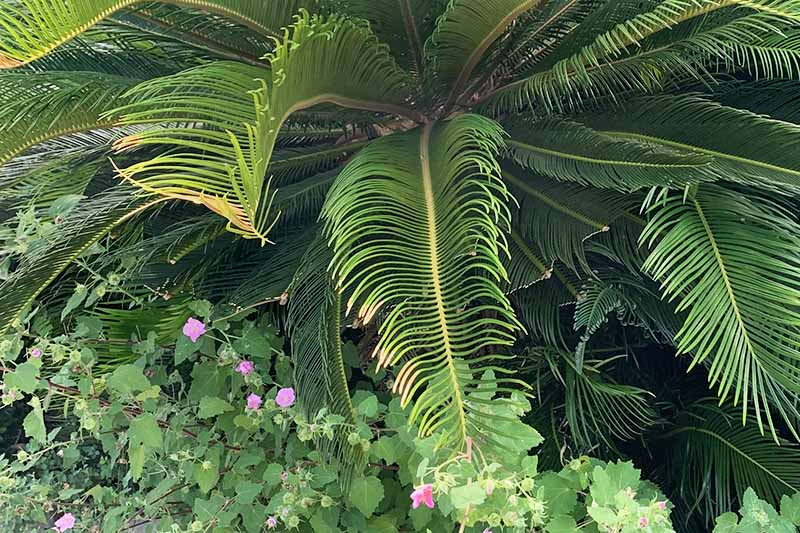
Occasional watering and a little fertilizer paired with checking the fronds occasionally for signs of poor health is all that’s usually required to keep your sagos happy and thriving.
In case you do run into any issues, we’re here to help!
Here’s what’s to come in this article:
Managing Pests & Diseases in Sago Palm
Let’s dig in!
Managing Pests and Diseases
Sagos are generally easy to care for, and you should have no problem maintaining them in good health as long as they are planted in the proper location and tended to appropriately.
For more helpful tips, you can read our full growing guide.
It would be fantastic if you never face any issues. (Your thumbs are so green! My eyes! Must look away!) But here are a few potential problems that you may encounter:
Scale Insects and Mealybugs
C. revoluta is susceptible to scale, which can be managed by hand picking, blasting the affected areas with water to wash the invaders away, or by applying a horicultural oil or insecticidal soap.

Bonide All-Seasons Horticultural Oil Spray, 32 Fl. Oz.
Insecticides like malathion have also been used with some success.

Garden Safe Insecticidal Soap Insect Killer, 2-Pack
Organocide is another product that is often recommended to combat these pests.
It’s a nature-safe organic combination insecticide and fungicide, made of sesame oil, fish oil, and other ingredients that are safe for use around pets and children, and that won’t harm the bees.

Organic Laboratories Organocide 3-in-1 Garden Spray
Natural predators like lacewings and ladybugs can help to take care of scale insects as well.
In Florida, Cybocephalus nipponicus, the scale picnic beetle, and Coccobius fulvus, a type of parasitic wasp, have been introduced to help combat Asian cycad scale. Read more about beneficial insects and what they can do for your garden here.
The bugs known as scale are flat, oval insects that thrive in warm and dry environments. They’re commonly tan, white, or brown. And they will suck sap from your plants, depriving them of nutrients.
Mealybugs are another type of scale insect, with soft bodies rather than hard external armor.
They appear as soft, white flecks, barely resembling insects at all when viewed with the naked eye, like those pictured above. Like aphids, these bugs excrete what’s known as honeydew, which can encourage the growth of sooty mold.
Asian cycad scale (Aulacaspis yasumatsui) and false oleander scale (Pseudaulacaspis cockerelli) are the most common pests of this type known to plague cycads.
While the Asian cycad scale insects will commonly set up shop on the underside of fronds first, false oleander scale bugs apparently prefer to dine right-side up, on the surface of leaves.
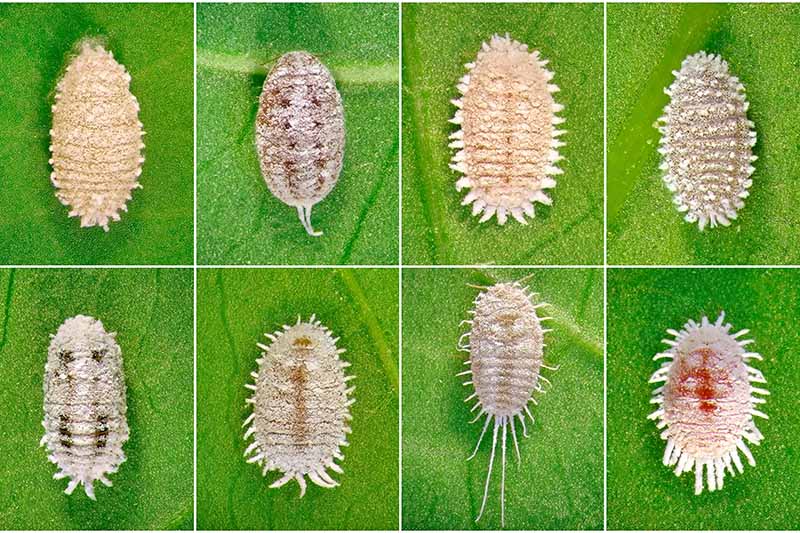
Keep in mind that even after they are dead, these pests will often continue to cling to leaves, sometimes making it difficult to determine whether you have a new infestation on your hands.
Employing integrative pest management practices in your garden is an excellent way to prevent future problems from arising, track and keep an eye on unwanted visitors, and control their effect on your plants. You can read more about IPM here.
Maintaining good weeding practices around the base of your plants is also a good idea, to keep unwanted insect visitors to a minimum.
Read more about identifying and controlling scale insects here.
Sooty Mold
Sooty mold is a fungus that looks like black soot. Once you’ve gotten rid of the pests that introduce it to your landscape, it can be washed off your sagos.
On the other hand, heavily infested plants may die. If you’ve determined that yours are beyond treatment, pest-ridden and diseased plants should be removed and properly disposed of in sealed bags with your household trash (not thrown on the compost heap) to avoid spread to the rest of your garden.
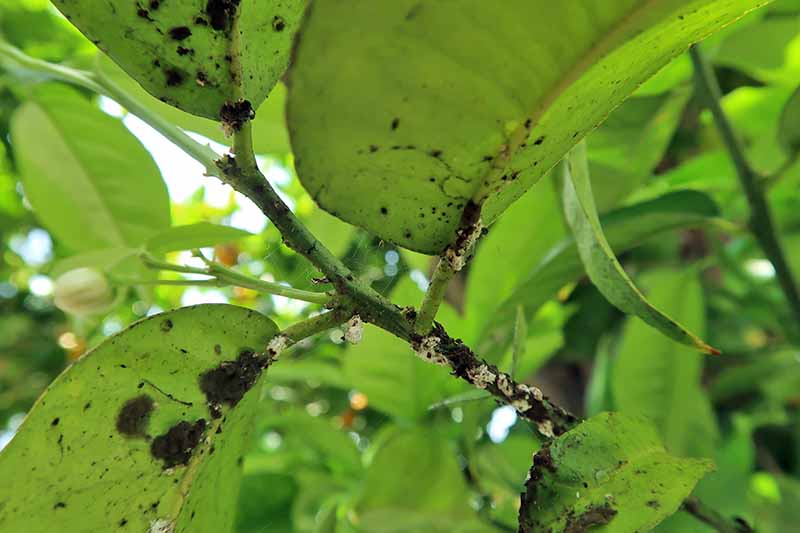
A heavy coating of sooty mold can prevent life-giving light from getting through to the leaves, interfering with photosynthesis and further damaging the health of your cycads. Get rid of any scale insects that have taken up residence, and then clean the fronds thoroughly.
Read more about identifying and combating sooty mold here.
Rot
Several types of rot may affect C. revoluta. It’s important to act quickly if you notice signs of fungal disease, particularly if you have other cycads or true palms growing in the area, to avoid spread throughout your yard.
Root rot is common in sagos that have been planted improperly, and those that are receiving too much water. Commonly caused by Phytophthora water molds, this disease is marked by leaf wilt, and yellowing fronds.
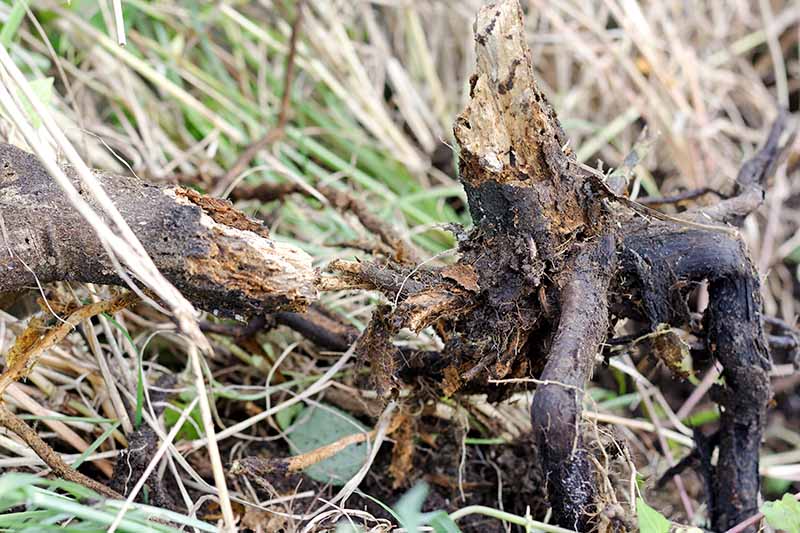
Moving up to the top of the plant, as its name suggests, crown rot will first appear at the crown of C. revoluta where new leaves are developing, progressing outward to the next set of larger fronds.
Fronds will yellow, appear bleached or burned, display brown lesions, wilt, and eventually turn brown and die. Younger fronds may rot and fall off while mature greenery may remain attached, and you may notice sap oozing from the base of leaves.
This disease is caused by the same type of fungus as root rot, and application of a fungicide may save your plants. Mefenoxam products have been used with some success, particularly when treating younger cycads.

Pink rot, or Gliocladium blight, is another disease common to palm-type plants, noted by pink spore clusters that may appear on any part of your cycads. Trunks that are oozing brown sap are another indication of poor health related to various types of fungal infection.
To avoid all types of fungal disease, good planting and care practices are a must. Be sure to plant only in well-draining soil in a location with adequate light, and in containers with sufficient drainage holes.
Do not pile mulch around the base of your plants, since this can serve to retain excess moisture, and avoid overcrowding to allow proper airflow.
Avoid excessive pruning, since wounding cycad plants can weaken them, and make them susceptible to disease. Prune only with sanitized tools, to prevent the spread of infection around your garden.
Allow the soil to dry out between waterings, to prevent wet feet. And be sure to water only at the base of plants, in the early morning if possible, avoiding the leaves. Never use water that may be contaminated with fungal growth to irrigate your plants.
It’s unfortunate that many sagos infected with rot will succumb to fungal disease, and your best option is to remove plants that are unhappy in their location.
Mature sago palms do not typically respond well to transplanting, but it may be worth a shot if you can catch a potential problem early. If you must relocate your sago palm, the best time to do it is in winter or early spring, when the plant is dormant.
Gardeners in cold climates should really stick with container cultivation for this one, and be sure to bring potted plants inside before the risk of cold damage becomes an issue. If a brightly lit location is available, indoor container gardening year-round may be your best option.
Yellowing
If you spot new growth that turns yellow, this may be an indication of a nutrient deficiency, namely a lack of sufficient quantities of manganese.
If you notice yellowing, you can supplement with manganese sulfate. Keep in mind that this is not the same thing as magnesium sulfate, the active ingredient in Epsom salts.
Fronds that have already begun to turn yellow will not recover, but supplementing with the proper nutrients will help to restore good health to the rest of the plant.
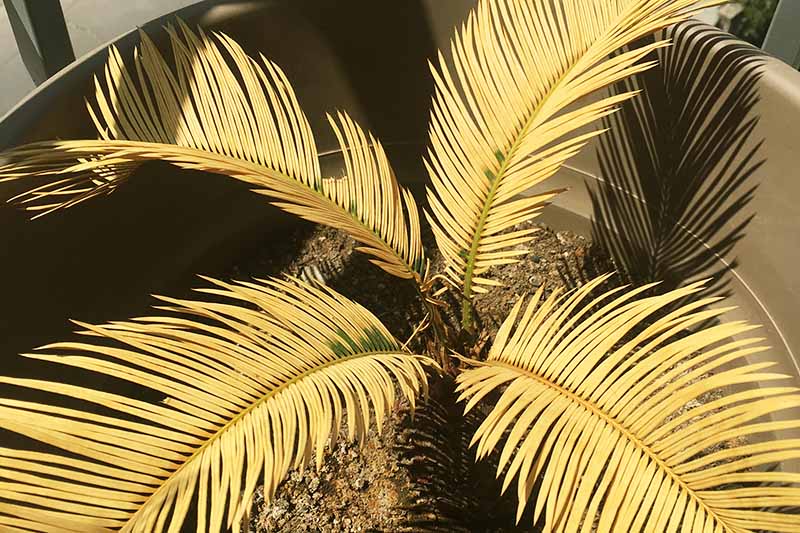
Yellowing on new foliage may also be an indication of poor drainage, or overwatering.
When I had the occasional problem with yellowing or fronds dying off on my patio in southern California, we were in the middle of a drought, with occasional flood rains in the winter just to change things up. The plants predated my arrival at this location as a tenant, already planted in sturdy, incredibly heavy containers on the back patio.
I never amended the soil, and I couldn’t tell you whether they had good drainage in those containers or not. Honestly, I was just happy to have something already living that was growing relatively happily when I moved in.
These sagos were located in partial shade and they were watered occasionally by myself, or by a landscaping crew hired by the landlord that paid little mind to the actual needs of the plants (ask me about the time they lobbed off the top three feet of the cacti that were also growing there, to my horror).
Since they were potted, these plants were not very large. The frond damage eventually resolved itself, with dead foliage that was easily clipped, or that would dry and fall off on its own.
This didn’t affect the overall health of the plants, and it was safe to assume that this was not a sign of disease since the problem did not spread.
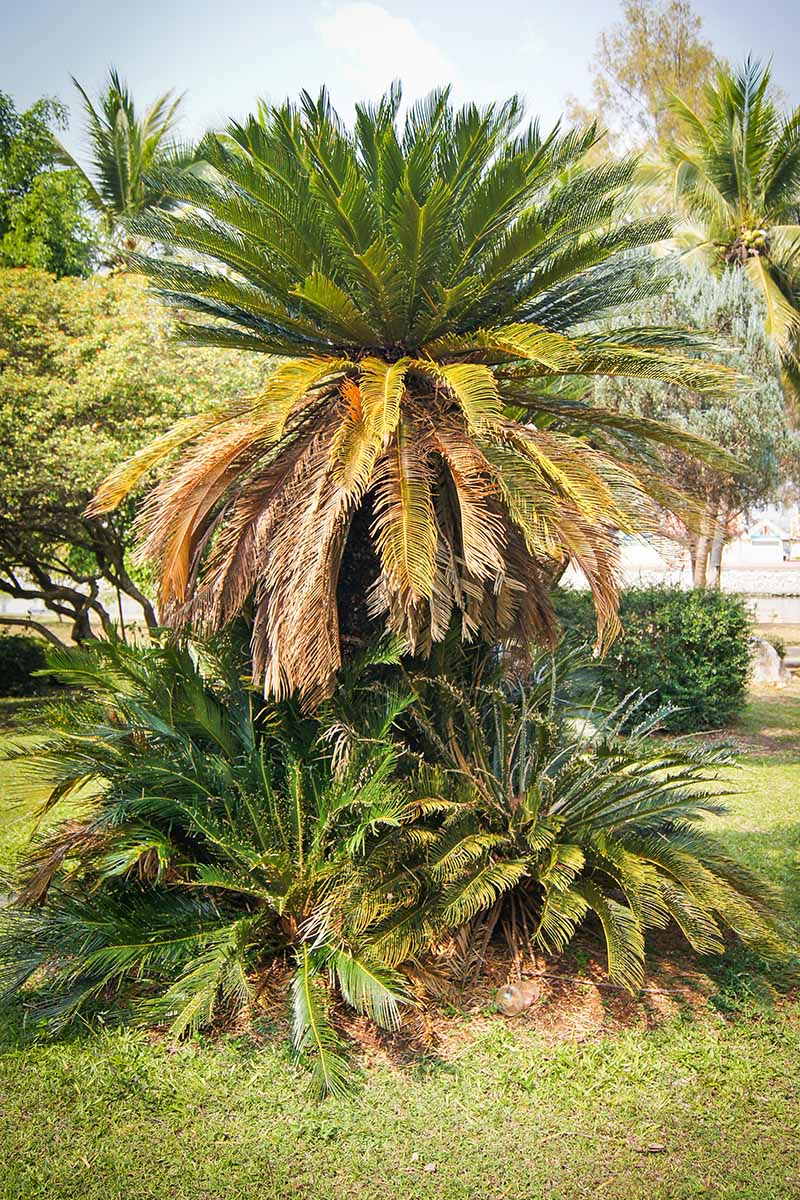
Fronds will also begin to turn yellow with age, eventually shriveling and turning brown. This isn’t a sign of an unhealthy plant, but rather, simply a process that is typical of cycads. Dead fronds can be removed.
Fertilize regularly to prevent or treat a nutrient deficiency. Follow package directions for the size and location of your sagos, whether grown in the ground or in a container. Soil testing may also help you to determine exactly what it is that your soil lacks.
Furthermore, don’t go crazy with the watering! Established cycads are drought resistant, and should be planted only in well-draining soil that is allowed to dry out between waterings. Standing water or saturated ground is not your friend if growing these plants.
Keep Your Plants Healthy and Happy
Armed with this information, we hope you’ll be able to prevent and identify common problems that C. revoluta may encounter, and apply our suggested remedies when the need arises. Gardening can sometimes be a bit of a guessing game, but it certainly helps to know what you’re looking for.
Test your soil if necessary, don’t overwater, and be sure to plant in a mostly sunny location with some shade that isn’t already too crowded with plant life, or in appropriate containers. If you see signs of a problem, act quickly. And don’t hesitate to reach out with any questions – we’re happy to help.
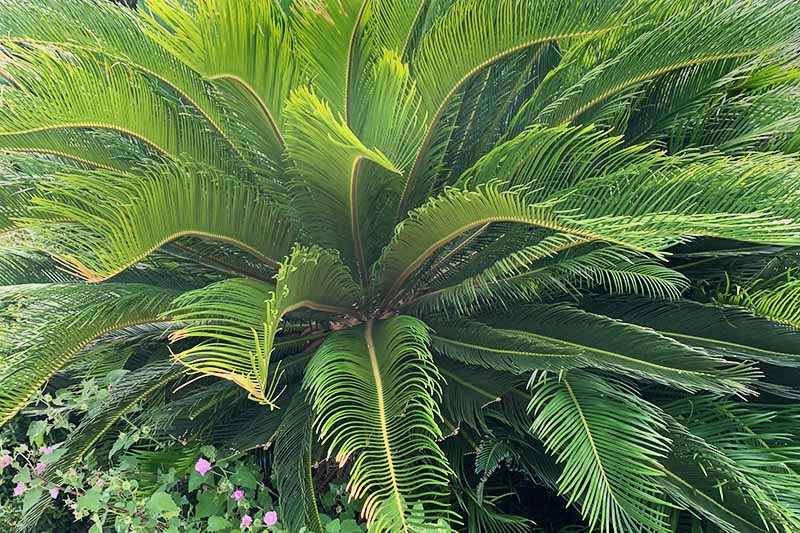
What changes have you made to your garden to keep your sagos healthy? Have you encountered any problems that we forgot to include here? Let us know in the comments below.
For more helpful info on combating pests and disease in your garden, check out the following articles:
- Doing Battle with Stink Bugs
- Are Plants that Repel Mosquitoes a Scam?
- Getting a Grip on Flea Beetles
- How to Identify and Control Sooty Blotch and Flyspeck on Apples
Photo © Ralph Barrera reprinted with permission. Photos by Gretchen Heber © Ask the Experts, LLC. ALL RIGHTS RESERVED. See our TOS for more details. Product photos via Bonide, Garden Safe, and Organic Laboratories. Uncredited photos: Shutterstock. Revised and expanded from an article originally written by Gretchen Heber.
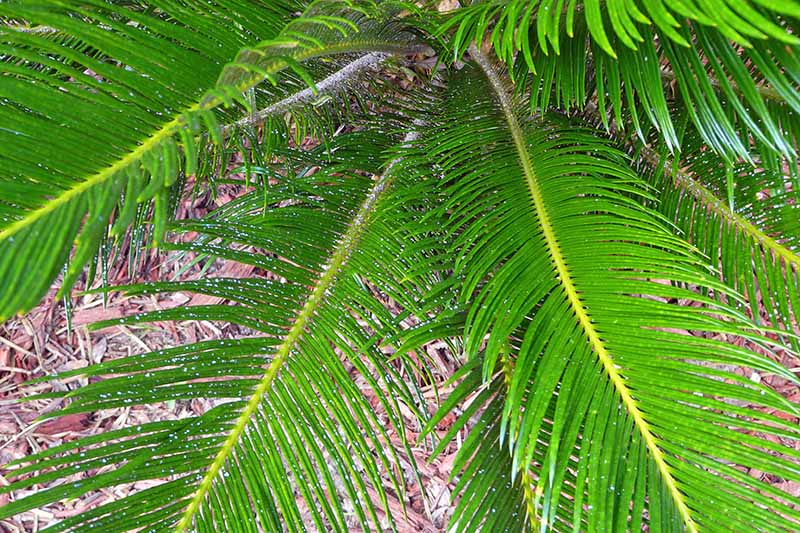
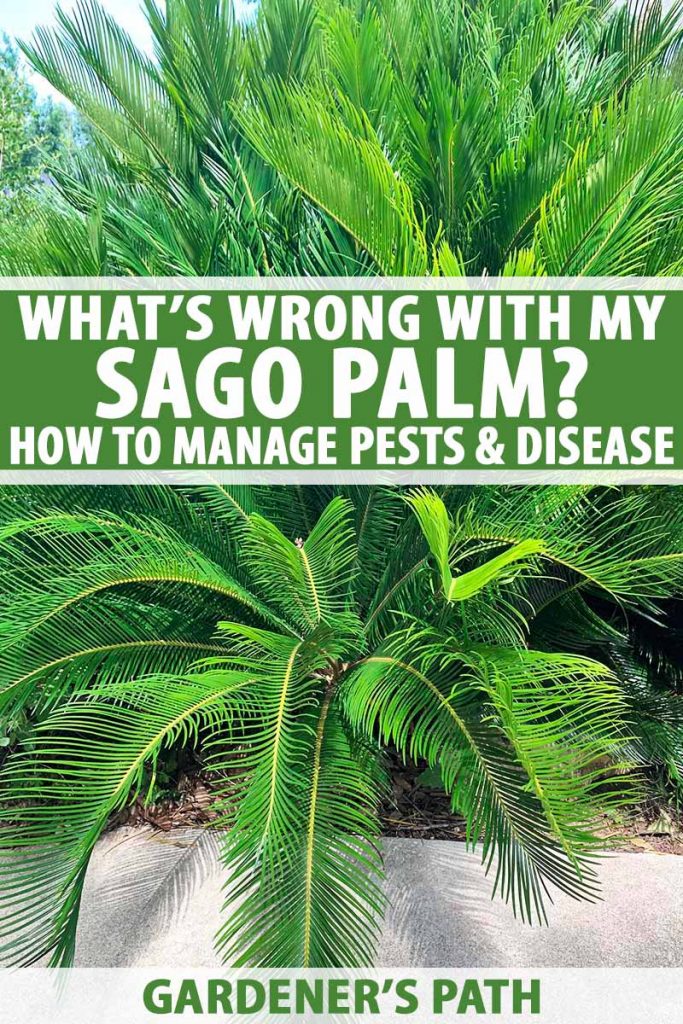
I have a white snow like stuff on my Sago and I don’t know what to do about it. It was so pretty but now it just looks almost all white.
Hi Shirley, I hope that you were able to cure your sago palm! It sounds like you had mealybugs – insidious little pests that can be difficult to get rid of. With sago palms, you should prune and get rid of the infected fronds – away from your plants! Sanitize your tools with 10% bleach or 70% rubbing alcohol. Then you should spray insecticidal soap or horticultural oil until the fronds are dripping. Repeat this treatment once or twice at 5-10 day intervals. The article suggests brands of horticultural oil and insecticidal soap that are effective.
My Sago Palm has now sprouted very long new leaves coming out of the bulb. Is this normal? She is about 4-5 yrs. old and I love her.
Help I have breathed in the white dust of the sago palm in cutting it off…i can’t find any medical discussion about the cough I have because of it. Does anyone know if the cough will pass or are pests in my lungs now?
Hi Cee, I hope that you are feeling better by now! I’m so sorry that you breathed in the dust. I don’t think you had the pests breeding in your lungs. However, they can cause a skin irritation, so that suggests that breathing them in could have irritated your lungs. I hope that you were able to see a doctor.
My new cycas leaves always get infected with small unseen bugs
Hi Poonam, I’m sorry to hear that! There are a couple primary small pests of cycads. My guess is that they are scale, because if they were mealybugs, your plant would look white. First, you should prune off the infested fronds. Make sure to sanitize your pruning shears (70% rubbing alcohol or 10% bleach). Then spray the plants thoroughly with horticultural oil or insecticidal soap. You should saturate the plant until it drips off the fronds. You can buy them at your local hardware store or garden center, or if you want to order online, the article has a couple… Read more »
I have a palm tree and the leaves are sticky with sap. What is wrong with it?
Hi Alex, I’m sorry to hear that. Usually when that’s the case, the plant is infected with an insect that secretes what is called “honeydew.” My guess is that there are no obvious insects, or you would have mentioned them. That suggests that the cycad’s problem is scale insects. If you look closely at the bottom of the leaves, there will be tiny little armored insects if that is the case. The way to get rid of them is to spray the plant with insecticidal soap or horticultural oil. That is described in the article. I hope that will help!… Read more »
Sago palms and palm trees are different plants, though they are both prone to some similar diseases. This is probably scale, or an infestation of another type of insect, such as mealybugs or aphids. Have you noted any insects on your tree? Is the sticky sap also developing black mold? Try spraying your palm once a week with horticultural oil, and see if that helps.
I brought one home from Florida that is about 2 feet tall. The crown had 5-6 new tall sprouts in the middle, 5-8 inches tall. We have been home a week and they turned to leaves but the edges are somewhat curling in. I need to move it to a pot for outside during the summer, but not sure what type of pot and if I should do rock in the bottom for drainage. Also is 60 degrees and up okay? I am in Cincinnati, Ohio. Once I put it out it will be in the sun all day.
A flush of new growth is an excellent sign of a healthy and happy plant! In Cincinnati you’re in USDA Hardiness Zone 6. Sagos can grow outdoors in Zones 9 and above year-round, but you can certainly keep your potted plant outdoors in the summertime, and it will definitely appreciate the sunshine. I would recommend introducing it to full sun gradually, a few hours at a time for about a week or so, before moving it into full sun conditions. Keep an eye on the weather later in the season, and plan to bring your plant indoors immediately if frost… Read more »
I have sago plants and every time when new branches start coming up some green insects damage. Please guide.
Hi Dhanesh,
I am so sorry that an insect is eating your sago palms. Unfortunately, I don’t know what type of insect it is. I would suggest treating it with an insecticide such as neem oil that will kill a wide variety of insects. I hope that will work for you. Please let us know how it turns out.
Hello, I just purchased my first Sago. Can you tell me if it is healthy? i have it still in the pot it came in.
I am not sure if there is an issue and how to treat. Thank you!
Hi Raven, Congratulations on your new purchase! Overall, it looks healthy, but I’m glad that you posted closeups of the little spots on the leaves. That looks like it is the start of an insect infestation – probably scale. Since you caught it early, you should be able to control it. Take it outside and blast it with water from a hose if possible. Then I would strongly suggest using one of the insecticides described in the article to treat scale and mealybugs. Since it’s an indoor plant, I think that you would be much better off with the horticultural… Read more »
Hi,
would you be able to guide me with what to do for our dear sago palm that’s dying. There’s this dusty stuff on its top and in the last week most of the fronds have fallen off.
Photos attached
Can you try uploading them again, Sunil? If not, could you describe the dusty stuff in a little more detail, and the condition of the fronds that have fallen off? We’d love to help you to get to the bottom of this!